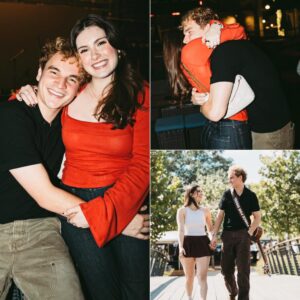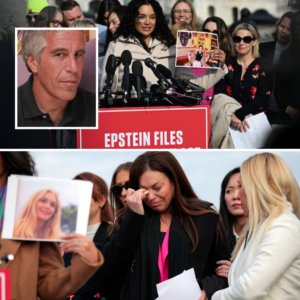As the fifth season of the hit Netflix series is confirmed, conversations have erupted once again about the series and its blind spots. But why can a TV show not just be escapism?
Among the (many) criticisms that are levied at Emily in Paris, the unrealistic and unrelatable financial stability of its protagonist Emily Cooper, played with aplomb by former ELLE UK cover star Lily Collins, is one of its most ubiquitous.
Since the first season aired in 2020, fans have bemoaned how Emily, a marketing executive working in one of the most expensive cities in the world, is able to afford custom Harris Reed or new-season Jacquemus and Kate Spade? Add to that her apartment in the fifth arrondissement, often considered one of Paris’ most desirable locations and home to cultural landmarks Jardin des Plantes and Panthéon. The average salary for someone working in marketing in Paris is €40,000 (£33,772) – a figure that’s not to be sniffed at, but certainly not enough to afford Emily’s apartment, nor her covetable designer and vintage-filled wardrobe. Then there’s the rather more sentient struggle of Emily’s; when, in season three, she finds it hard to obtain a work visa, and her bureaucratic difficulties are expedited by Brigitte Macron retweeting Emily’s tweet sharing her frustration at the system.
These are all moments at which all of us – living through this current period of dramatic, breathless political, financial and societal pressures – may roll our eyes, or even let out a little ‘sacre bleu’! But why are people up in arms on social media about such a feel good TV show?
Emily in Paris is a work of fiction; it’s a work of art, merely a figment of its creator, Darren Star’s imagination. If there’s anything that I, for one, – but I would also argue that we collectively – are in dire, desperate need of, it’s escapism from the churn of heartbreaking and seemingly relentless news right now.

Star is the man responsible for zeitgeist-defining TV shows Beverly Hills, 90210 and Sex and the City, the adaptation of his friend Candace Bushnell’s Observer column of the same name which, following its premiere in 1998, won seven Emmy, eight Golden Globe and three SAG Awards and spawned a sequel that’s currently entering its third outing. This is a man who knows what people want to watch; he creates characters that straddle party lines, they’re neither lovable nor deplorable. They exhibit personality traits viewers simultaneously bemoan, while also secretly seeing parts of themselves reflected in.

‘I think it’s great if people are watching for whatever reason they’re watching. I definitely feel like [my shows] are entertainment. Although I would ask, why would anybody watch anything if not to be entertained?’ Star told Harper’s Bazaar in January 2023, while also explaining that it was his first trips to Paris in his twenties that inspired the premise of the Emily In Paris series.
Why would anybody watch anything if not to be entertained?
He’s right; why would you watch actively choose to watch something in your spare time if not to be entertained or informed? One of the beauties of well-made art lies in its ability to transport audiences without the requirement of endless funds, a passport or a one-way ticket to places they haven’t been, or maybe never will go. Television shows and films are created so that for just a few hours, we can step out of the hum-drum of our daily existences, and into that of somebody who runs around Manhattan in Manolo Blahniks or pops up in Paris clad in vintage Vivienne Westwood.

Audrey Hepburn herself and her projects are both a sartorial and visual inspiration for Emily in Paris, but ask yourself this: have you ever bemoaned the unapologetic romance of Roman Holiday? Were there ever any headlines calling Hepburn’s 1963 mystery-comedy Charade – which inspired the fourth season’s skiing scene – banal or, even worse, irritating? Did commentators deem My Fair Lady tired or antiquated? Of course not. Before the division between entertainment and real life became increasingly blurred, audiences knew that these creations were made to entertain them. Not to reflect their own existences back to them – who wants to watch a TV adaptation of rush-hour on the Central line, or a sad Pret salad eaten al desko at lunch? – but rather to transport them to somewhere frothier and fizzier. Somewhere far removed from the banalities of their everyday existence.

When it’s done well, art can teach us pertinent lessons, too. Cooper’s foremother, SATC’s Carrie Bradshaw, taught us the importance of female friendships; she reminded us to never save your best sartorial investments for a rainy day, but rather to enjoy them every day. Sex and the City also reiterated to an entire generation how imperative prioritising pleasure really is; whether that’s sipping champagne with your best friends, running to sample sales at break-neck speed or, indeed, pleasure of a totally different nature à la Samantha Jones. Like SATC, Emily In Paris is a beloved TV show that will likely spawn sequels as a result of its legion of adoring fans. In many ways, yes, such shows are imperfect and relics of their time, but why don’t we stop analysing the minutiae and just allow their storylines to take us away for just a moment? Emily in Paris might never have been relatable or realistic, but therein lies its power.




